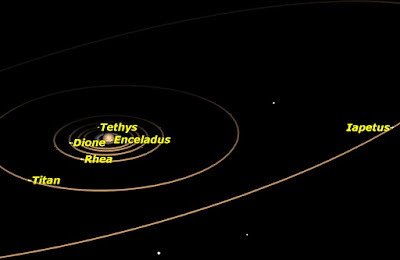Moon Phases
Sunday, October 4, 5:06 p.m. EDT
Last Quarter Moon
The Last Quarter Moon rises around 11:15 p.m. and sets around 2:30 p.m. It is most easily seen just after sunrise in the southern sky.Monday, October 12, 8:06 p.m. EDT
New Moon
The Moon is not visible on the date of New Moon because it is too close to the Sun, but can be seen low in the East as a narrow crescent a morning or two before, just before sunrise. It is visible low in the West an evening or two after New Moon.Tuesday, October 20, 4:31 p.m. EDT
First Quarter Moon
The First Quarter Moon rises around 2:15 p.m. and sets around 12:30 a.m. It dominates the evening sky.Tuesday, October 27, 8:05 a.m. EDT
Full Moon
The October Full Moon is known as the Hunter's Moon or Blood or Sanguine Moon. It rises around sunset and sets around sunrise; this is the only night in the month when the Moon is in the sky all night long. The rest of the month, the Moon spends at least some time in the daytime sky.Observing Highlights
Moon near Aldebaran
Friday, October 2, 9 a.m. EDT
The waning gibbous Moon will occult Aldebaran as seen from Micronesia, Japan, and North America. This occultation will be in daylight in eastern North America, but Aldebaran should be visible in a telescope.Moon near Venus
Thursday, October 8, 5 p.m. EDT
The Moon will occult Venus as seen from Australia, New Zealand, and Melanesia. Best seen in North America around dawn on October 8.Best seen in Australia and New Zealand at dawn on October 9.
Moon near Mercury
Sunday, October 11, sunrise
The Moon will occult Mercury as seen from southern South America. Best viewed in North America half an hour before sunrise.Zodiacal light
Monday, October 12–Thursday, October 24, before dawn
The best time in the year to see the dim glow of the zodiacal light in the pre-dawn eastern sky, the light reflected from millions of interplanetary particles. It lies along the ecliptic (shown in green). Don’t confuse it with the Milky Way, further south.Opposition of Uranus
Sunday, October 12, midnight EDT
Find Uranus at opposition by following the chain of stars in Pisces to a spot half way between Zeta and Epsilon Piscium, and a little to the south.Mercury at greatest elongation west
Thursday, October 15, 11 p.m. EDT
Mercury will be 18 degrees west of the Sun, best seen at dawn in the southern hemisphere.Mars near Jupiter
Sunday, October 18, before dawn
Jupiter and Mars will be close enough to fit in the same field of a telescope.Double shadow transit on Jupiter
Sunday, October 18, 6:42–8:08 a.m. EDT
The shadow of Io chases Ganymede’s shadow across Jupiter’s face.Double shadow transit on Jupiter
Sunday, October 25, 8:36–10:53 a.m. EDT
Shadows of Io and Ganymede enter Jupiter’s disk simultaneously, but Io’s shadow completes the transit by 10:53 while Ganymede’s takes over an hour longer. Best viewed in western North America.Venus at greatest elongation west
Monday, October 26, 3 a.m. EDT
Venus will be 46 degrees west of the Sun.Venus near Jupiter
Monday, October 26, 4 a.m. EDT
Venus will pass close to Jupiter.Moon near Uranus
Monday, October 26, 6 a.m. EDT
The Moon will occult Uranus as seen from New Zealand and French Polynesia. Here as seen from Auckland.Moon at perigee
Monday, October 26, 9 a.m. EDT
The Moon will be at its closest to the Earth this month. Expect high tides for the next four days.Moon near Aldebaran
Thursday, October 29, 8:30 p.m. local time
The Moon again passes close to Aldebaran.Planets
Mercury is well placed in the morning twilight for the most of the month. This apparition is more favorable for observers in the Southern Hemisphere.Venus is reaches its greatest western elongation from the Sun on the 26th.
Mars is low in the morning sky, moving eastward through Leo.
Jupiter shines brightly eastern pre-dawn sky all month. It passes close to Mars on the 17th and Venus on the 26th.
Saturn is low in the southwest evening twilight sky, and sets soon after. It moves from Libra into Scorpius on the 16th.
Uranus is in opposition on the 12th in Pisces, and is visible all night. Its closeness to the Moon on October 26 will be a good opportunity to observe it.
Neptune is visible most of the night in the constellation Aquarius.
Geoff Gaherty
Starry Night Software Support
All graphics © 2015 Starry Night Software


























No comments:
Post a Comment